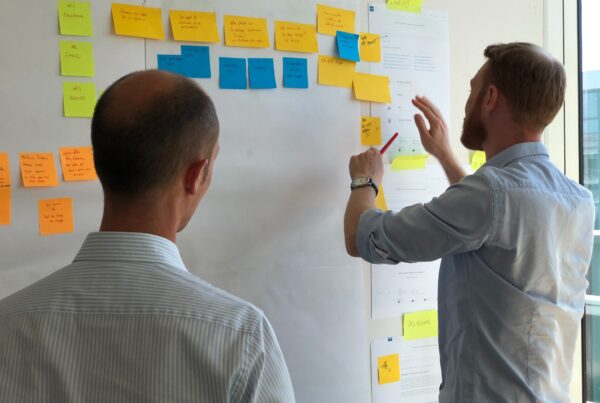I recently spoke to a fellow founder who was considering raising $3M in “pre-Seed” capital for her startup. However, $3M as a “pre-Seed” round leaves one wondering what exactly is the difference between pre-Seed and Seed. Furthermore, what distinguishes a Seed from a Series A round and so forth?
Conversations such as this are not uncommon in the startup world. The confusion regarding the distinction between rounds and how much to raise at each round is entirely understandable. Much of that confusion is driven by some investors in the venture community who are pushing founders to raise more capital earlier and earlier in their company’s lifecycle. In many ways, venture capital has become disconnected from the underlying risk-reward rules that should guide investor decision-making. For example, consider the following data courtesy of PitchBook:
In 2012, the median size of a Seed round was $500K. By 2021, it was over $2.5M. In 2012, the median size of an A round was $2.8M. By 2021, it was over $9.5M.
So over ten years, the median size of a Seed round quintupled to roughly the same size as what would have constituted an A round in 2012. Yet the cost of developing new products has decreased dramatically over the same period thanks to better design and development tools and decreasing infrastructure costs. So why the larger and larger early-stage funding rounds? No wonder founders can find it confusing to understand what constitutes a Seed vs. a Series A round, not to mention the emergence of the “pre-Seed round.”
In response to all the confusion regarding funding rounds, I thought I would share how we approach early-stage startup funding at MKII to add a little clarity to the chaos.
Rule #1: Early-stage funding should focus solely on systematically eliminating business risk.
When we decide to launch a new company, we focus on systematically eliminating the three primary risks associated with business viability. Below are those three risk areas and the order in which we tackle them:
- Market Risk:Can we validate the presence of a significant unmet market need?
- Product Risk:Can we validate that there is a viable product that we are well-positioned to build that will satisfy that unmet market need?
- Customer Risk: Can we validate the business’s ability to acquire and retain customers cost-effectively?
Rule #2: Connect fundraising rounds to each stage of risk.
Understanding the three primary risks associated with a startup’s viability allows us to link funding amounts to risk mitigation milestones. That is a fundamental component of early-stage fundraising that both founders and investors should understand. Accordingly, early-stage investments should be apportioned by risk and sized inversely to the remaining risk.
Order Of Funding | Focus Of Funding | Size Of Funding |
First | Validate Market | $ |
Second | Validate Product | $$ |
Third | Validate Customer Acquisition & Retention | $$$ |
Understanding the three primary risks associated with a startup’s viability allows us to link funding amounts to risk mitigation milestones. That is a fundamental component of early-stage fundraising that both founders and investors should understand. Accordingly, early-stage investments should be apportioned by risk and sized inversely to the remaining risk.
Rule #3: Raise the minimum amount necessary in each funding stage to mitigate the target risk appropriately.
Despite the trend in VC today, a founder should NOT raise as much capital as possible during early funding rounds. Savvy founders don’t take more money than they need, even when offered on “great terms.” That might sound counter-intuitive as most of us constantly hear of “successful companies” being the ones that can raise the most money.
Somehow we all forgot that raising money is not the goal of a startup. Capital is simply a tool to help you build your business. Bragging about how much capital you’ve spent in the early stages of building a business is like bragging about using the most lines of code possible to produce an application. Being efficient is elegant. Being inefficient is ugly.
As long as those three primary risks remain, a founder’s goal should be to build a successful product and company with the least amount of money possible. That creates the maximum value for founders (by avoiding unnecessary dilution) and their investors (by maximizing Return on Invested Capital).
Determining How Much to Raise
We’ve included a chart below that shows how MKII approaches capital allocations by risk area to develop new SaaS or tech-enabled services businesses with large addressable markets. The amounts shown for each stage of risk are what we’ve found are typically sufficient to mitigate that risk area. We focus on keeping costs as low as possible to address the target risk area and nothing else at each stage.
Validating the market generally involves doing customer-centric market research and concept validation testing with clickable prototypes and other low-cost media. That typically only costs around $50K to do well. Once this step is complete, we generally know enough to decide whether it is worthwhile to take the plunge and develop a company and product. Best of all, we also know precisely what to build to meet customer needs and can be very fast and efficient in the next stage.
Validating a product involves taking what we’ve learned from the market validation stage and developing an MVP following lean product development methodologies. There are VERY few software-oriented startups that should cost more than $1M to develop the initial product and get early customer adoption. At this stage, we typically invest very little in marketing or sales and rely on the founding team sourcing initial customers. Once again, the goal is simply to achieve Product-Market Fit (PMF) by demonstrating a product with a sustainable business model that satisfies the unmet market need and that customers love.
Once you’ve achieved PMF, you can begin investing in optimizing and scaling the customer acquisition infrastructure. At this stage, the goal is to show that you can acquire customers for less than the value of those customers and scale the business. The more efficiently you can acquire those customers, the better. The focus at this stage is on scaling the sales and marketing spend and optimizing KPIs such as CAC to LTV/ACV.
Our Modest Proposal
So to bring all of this together and connect it to the vocabulary that has become popular in venture capital, we propose the following approach to early-stage, software-oriented fundraising. While every situation and startup opportunity is unique, we believe this model is the most practical and beneficial approach to building software startups for both founders and investors most of the time.
Conclusion
Again, the goal at each stage is not to raise as much money as possible, but rather to raise the minimum amount necessary to mitigate the target risk area. We hope more VCs will start embracing this model and stop encouraging founders to raise more money than is actually needed in the early stages of building new products and companies.





